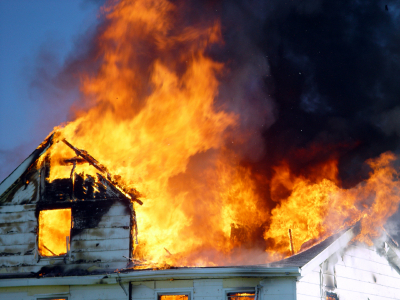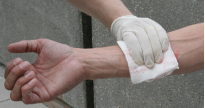|

Lost Child and Abduction
Prevention - (back
to TOP)
For parents and caregivers, following some basic steps can help to prevent
child abduction:
1. Make sure children
are properly supervised at all times
2. At an early age,
each child should know his or her full name - children should also know the
full names of their father, mother, or guardian.
3. Teach children
their home phone number, address and trusted emergency contacts.
4. Make a photo
identification card for the child to carry, and duplicates for parents and
caregivers to keep - Keep the photo updated every 6 months.
5. Encourage children
to communicate and to talk openly - Listen for clues about things that may be
troubling them. Watch for changes in the child's behavior.
6. Monitor children's
use of the internet - Have clear rules and guidelines established for
computer use. Teach children to not share personal information online and to
never agree to meet someone they don't already know in person. Learn the
child's favorite web sites and spend time with them online
For more information about child abduction prevention, check out http://dsp.delaware.gov/ or http://www.missingkids.com
Visits to the Doctor - (back
to TOP)
1. Expect to be asked for
your photo ID and your child's insurance card
2. Expect to fill out detailed information on your child
3. Expect to go into the exam room with your child
4. If, for some reason you can't be present in the room, and sometimes for
older adolescents, expect a nurse or other staff member to chaperone the
physical exam
5. Expect at a well visit and at some problem visits, depending on your child's
symptoms, for the doctor to examine your child's body including a brief
genital exam.
6. Expect your doctor. to share what he is doing
and why during the exam.
7. Expect your doctor to explain any problems or issues he/she finds
during the exam
8. Expect your Dr. to talk to your child about age appropriate health and
safety issues including about "okay touch/not okay touch."**
9. Expect your doctor to provide time to discuss any questions or concerns
that you or your child may have.
**For more information about talking with
children about sexual issues including abuse please see this link from the
National child Traumatic Stress Network: http://nctsn.org/nctsn_assets/pdfs/caring/sexualdevelopmentandbehavior.pdf
Tips Courtesy of: Dr. Jason Hann-Deschaine
Parks & Recreation Safety - (back
to TOP)
During
warm weather residents spend more time in our parks and enjoying the out
doors please keep a few safety tips in mind and always be aware of your
surroundings.
1. Always lock your vehicle
and do not leave valuables in your car.
2. Always be aware of your
surroundings.
3. Report suspicious
activity to the police immediately
4. When the park is not too
crowded, stay near other groups or take a friend along.
5. Always practice personal
safety when traveling to or from your car, be aware of the surrounds and any
strange individuals. Try and park close to a light if possible as it may be
dark when you return to your car.
6. Always have your keys in
hand as you approach the car do not take time to expose your self if you need
to focus on finding your keys and not who/what is around you. Try to walk to
your car with someone else as there is safety in numbers. Walk with a
purpose, keep your head up and stay focused.
7. When walking in the woods
and on the paths in our parks try to carry a whistle or horn and use it if
you feel threatened attraction is a good defense. If you need to yell use
words like FIRE or STRANGER these tend to get more attention.
8. If you can not talk but
can dial your cell phone use a coded message like “Why are you pointing a
knife at me?” The police are rained in situation like that and will respond
immediately by tracking your location.
These are a few tips to keep you safe this summer
when visiting our Parks and Open space around the county
For
more information about local Parks & Rec
programs please visit New Castle County Parks
Safety
tips courtesy of Councilman David Tackett
Fire Safety Exit Plan - (back to TOP)
 Save lives by preparing and practicing a fire
escape plan. Make sure to not just talk about the plan, but practice it.
Basic elements of an escape plan should include: Save lives by preparing and practicing a fire
escape plan. Make sure to not just talk about the plan, but practice it.
Basic elements of an escape plan should include:
1. Ensure smoke
alarms are installed on every level of the home and are working properly.
Test them monthly and change the batteries at least once a year.
2. Have two ways to
get out. If the primary route is blocked, a window may need to be used. Make
sure windows are not stuck shut. Have a collapsible ladder for upper story
windows.
3. Teach everyone to
crawl out and not stand up in smoke. Smoke can be full of toxic gases and can
stop a person from getting out safely.
4. Have a place
everyone knows to meet outside away from the home. For example, meet on the sidewalk
or next to a specific tree.
For more information check out http://www.usfa.dhs.gov/citizens/all_citizens/home_fire_prev/escape.
Drowning Prevention - (back to TOP)
 Make sure children always have supervision while
swimming. As a swimmer gets tired or is in trouble, remember reach or throw,
don't go. Make sure children always have supervision while
swimming. As a swimmer gets tired or is in trouble, remember reach or throw,
don't go.
If on the edge of a pool, one way to help is to use a pole. Stand perpendicular
to the pool's edge, extend the pole to the swimmer's side, and pull them to
the side of the pool.
If in the water, you can use your body to reach a struggling swimmer. Hold
the edge, reach out your leg, ask the struggling summer to grab your foot, and
pull the swimmer to the side.
Another way to help a swimmer is to throw something he or she can use for
flotation. If you are not a trained lifeguard with equipment, do not swim out
to help a struggling or drowning swimmer.
For more detailed information watch a video at http://www.profirstaid.com/en-US/training_video/pool-safety/play_video.
Backing Safety - (back to TOP)

Vehicles parked in driveways can be very dangerous to children playing
outside. Many children are killed by vehicles that are backing up because it
is possible to check all mirrors before backing up and still miss a child
that is in, or is moving into, a vehicle's blind spot.
To prevent this, know where children are at all times when backing up and
even tell children to move into the yard where you can see them before
backing up.
For more detailed information watch a video at http://www.profirstaid.com/en-US/training_video/car-backing/play_video.
Conscious Choking - (back
to TOP)
 If a child is choking and conscious, signs include looking panicked, blue
color around the lips, and the inability to talk, cough, or breathe. The
child may do the universal choking sign with hands around their throat.
If a child is choking and conscious, signs include looking panicked, blue
color around the lips, and the inability to talk, cough, or breathe. The
child may do the universal choking sign with hands around their throat.
Ask if the child needs help. Get to the level of the child by kneeling or
sitting, and raise their elbows. Place one hand with thumb tucked in against
the abdomen, above the bellybutton, and grab your
fist with the other hand. Perform inward and upward abdominal thrusts until
the object is clear or the child become unconscious.
For more detailed information watch a video at http://www.profirstaid.com/en-US/training_video/conscious-child-choking/play_video.
Hands Only CPR - (back to TOP)
 If a person collapses and is not moving and not
breathing, call 911 and start compressions. Hands-only CPR helps encourage
lay rescuers to get involved who may not otherwise help. If a person collapses and is not moving and not
breathing, call 911 and start compressions. Hands-only CPR helps encourage
lay rescuers to get involved who may not otherwise help.
With this technique, rescuers deliver 1.5 to 2 inch deep compressions at a
rate of approximately 100 compressions per minute without the need to deliver
rescue breaths in between. Hands-only CPR eliminates the fear of transmitting
disease by removing the mouth-to-mouth component of CPR.
For more detailed information watch a video at http://www.profirstaid.com/en-US/training_video/hands-only-cpr/play_video.
Controlling Bleeding - (back to TOP)
 Capillary bleeding refers to superficial abrasion
wounds and is easily controlled. Capillary bleeding refers to superficial abrasion
wounds and is easily controlled.
Venous bleeding is more severe than capillary bleeding, but is not under
pressure like arterial bleeding. It is characterized by oozing or running of
dark colored blood.
Arterial bleeding is characterized by brighter red blood that may pulsate or
spurt.
To control severe bleeding, apply direct pressure with a dressing. If blood
leaks through, apply more dressing on top. Never remove a dressing. If there
are no bone fractures or spinal cord injuries, elevate the wound above the
heart.
Once bleeding is under control, use roller gauze to secure the dressing,
beginning at the distal end and working towards the heart. You can twist the
gauze to apply more pressure.
Check to make sure blood is not leaking through, and that the bandage is not
having a tourniquet effect. Elevate the wound, and call EMS
or take the patient to the nearest hospital.
For more detailed information watch a video at http://www.profirstaid.com/en-US/training_video/bleeding-control-arterial-bleeding/play_video.
Shock - (back to TOP)
 A conscious/responsive shock victim may exhibit
symptoms of restlessness, fear, shivering, rapid breathing and pulse rate,
sweating, nausea, vomiting, headache, and/or tiredness. They may become unresponsive
and lose consciousness. A conscious/responsive shock victim may exhibit
symptoms of restlessness, fear, shivering, rapid breathing and pulse rate,
sweating, nausea, vomiting, headache, and/or tiredness. They may become unresponsive
and lose consciousness.
An unconscious shock victim's circulatory system is failing to deliver enough
oxygen, and they may therefore have a blue coloring in their nail beds, tops
of hands, around the lips, and/or face.
Treatment of shock begins with assessing responsiveness, calling 911, and
checking airway, breathing, and circulation. Provide CPR is the patient is
not breathing and not moving. Elevate the legs higher than the waist and keep
the victim warm. Check for reasons that may have caused shock by performing a
secondary survey.
For more detailed information watch a video at http://www.profirstaid.com/en-US/training_video/shock/play_video.
Allergies - (back to TOP)
 Life threatening problems can occur in people who
have extreme reactions from allergies. Some of the most common reactions can
be swelling or difficulty breathing from bee stings, food allergies, etc. Life threatening problems can occur in people who
have extreme reactions from allergies. Some of the most common reactions can
be swelling or difficulty breathing from bee stings, food allergies, etc.
It is most important to recognize an allergic reaction early on and act
quickly. Call 911 for any difficulty breathing or swelling around the mouth,
face, and neck.
Keep the person calm and maintain an open airway until EMS
arrives. Using an Epi Pen for someone who is in
need of immediate medical assistance can be extremely helpful until help can
arrive. Rescuers can assist a victim to administer his or her own prescribed Epi pen.
For more detailed information watch a video at http://www.profirstaid.com/en-US/training_video/allergic-reactions/play_video.
Broken Bones - (back to TOP)
 When treating musculoskeletal injuries, you should
first ascertain what caused the injury and check for any other injuries. When treating musculoskeletal injuries, you should
first ascertain what caused the injury and check for any other injuries.
When you begin treating, check for any deformity to determine the potential
for the injury to become a compound fracture. If the area merely appears red
and swollen, you may then begin you want to begin wrapping the injury at the
distal end, moving toward the heart. In the case of arms, you may then
continue to wrap around the body to give extra rest and support.
Once you are done splinting the injury, check the nail beds, skin color, and
skin temperature to ensure circulation has not been cut off.
For more detailed information watch a video at http://www.profirstaid.com/en-US/training_video/musculoskeletal-injuries/play_video.

Run, Yell, Tell Safety Video - (back
to TOP)
Click to watch this short, but very
important video
from the Delaware
State Police
|







 If a child is choking and conscious, signs include looking panicked, blue
color around the lips, and the inability to talk, cough, or breathe. The
child may do the universal choking sign with hands around their throat.
If a child is choking and conscious, signs include looking panicked, blue
color around the lips, and the inability to talk, cough, or breathe. The
child may do the universal choking sign with hands around their throat.
 Capillary bleeding refers to superficial abrasion
wounds and is easily controlled.
Capillary bleeding refers to superficial abrasion
wounds and is easily controlled. A conscious/responsive shock victim may exhibit
symptoms of restlessness, fear, shivering, rapid breathing and pulse rate,
sweating, nausea, vomiting, headache, and/or tiredness. They may become unresponsive
and lose consciousness.
A conscious/responsive shock victim may exhibit
symptoms of restlessness, fear, shivering, rapid breathing and pulse rate,
sweating, nausea, vomiting, headache, and/or tiredness. They may become unresponsive
and lose consciousness. Life threatening problems can occur in people who
have extreme reactions from allergies. Some of the most common reactions can
be swelling or difficulty breathing from bee stings, food allergies, etc.
Life threatening problems can occur in people who
have extreme reactions from allergies. Some of the most common reactions can
be swelling or difficulty breathing from bee stings, food allergies, etc.




